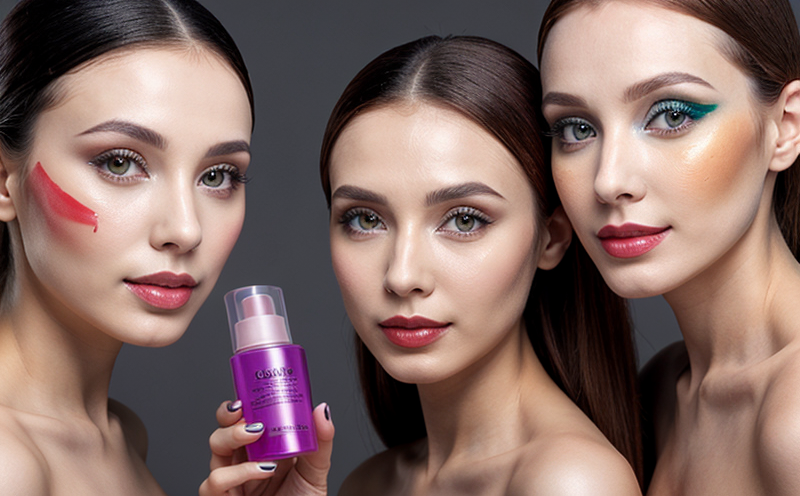Bioavailability Testing in Cosmetic Safety
The safety and efficacy of cosmetic products are paramount concerns within the industry. One critical aspect of ensuring product safety is assessing the bioavailability of ingredients used in these products. Bioavailability testing helps determine how much of a substance can be absorbed, distributed, metabolized, and excreted by an organism after application to skin or mucous membranes.
Understanding bioavailability is crucial for several reasons:
- To ensure that the cosmetic product does not contain harmful levels of potentially toxic substances.
- To prevent adverse effects on consumers due to excessive absorption of ingredients.
- To comply with regulatory standards and guidelines set by organizations such as the FDA and European Union Cosmetics Regulation (EC No. 1223/2009).
- To optimize ingredient formulation for enhanced efficacy without compromising safety.
In the context of cosmetics, bioavailability testing involves evaluating the extent to which a cosmetic product’s active ingredients are absorbed by the skin or mucous membranes. This can influence the overall effectiveness and potential risks associated with the product. The test is typically conducted on human volunteers or relevant animal models using standardized protocols.
Standard methods for conducting bioavailability tests in cosmetics include:
- Ex vivo testing: This involves applying cosmetic formulations to excised skin samples from animals (commonly rabbits) and measuring the absorption of active ingredients over time.
- In vivo testing: Involves applying formulations directly onto human volunteer subjects or animals, monitoring absorption through various means such as patch tests or blood sampling.
Advanced techniques for bioavailability evaluation include the use of microdialysis probes to measure the flux of active ingredients into and out of the skin. Additionally, in vitro methods utilizing cultured human cells provide a more rapid assessment while reducing animal usage.
The results from these tests are critical for determining the safe concentrations of ingredients that can be used in cosmetic products without causing harm. Compliance with bioavailability testing is not only important for regulatory compliance but also helps brands build trust and ensure product safety.
Scope and Methodology
The scope of bioavailability testing in cosmetic safety primarily focuses on the evaluation of active ingredients within formulations to determine their potential absorption by the skin or mucous membranes. This testing is essential for ensuring that the product does not pose a risk to human health.
The methodology typically involves several key steps:
- Preparation of the cosmetic formulation: Ensuring that the sample is representative of the commercial product.
- Dermal application: Application of the formulation onto the skin or mucous membranes according to standardized protocols.
- Sample collection and analysis: Collection of samples over a defined period, followed by analysis using appropriate analytical techniques such as HPLC (High-Performance Liquid Chromatography) or GC (Gas Chromatography).
- Data interpretation: Analysis of the collected data to determine the extent of absorption and its implications for safety.
Regulatory standards like ISO 16527-3 provide guidelines on how to conduct such tests, ensuring consistency across different laboratories. The results are typically reported in terms of concentrations absorbed over time, which helps manufacturers adjust formulations as necessary.
The methodology also considers the impact of various factors such as pH levels, surfactant types, and preservatives on bioavailability. This comprehensive approach ensures that all aspects influencing ingredient absorption are accounted for during testing.
Industry Applications
- Skin Care Products: Ensuring that moisturizers, serums, and other topical treatments do not lead to excessive absorption of potentially harmful ingredients.
- Hair Care Products: Evaluating the bioavailability of hair conditioners and shampoos to prevent over-absorption by the scalp.
- Fragrances: Determining the extent to which fragrance molecules are absorbed into skin tissue, ensuring they do not exceed safe limits.
- Makeup: Assessing how much colorants and pigments are absorbed by the skin to ensure they remain safe even with prolonged use.
Bioavailability testing is also crucial for developing new formulations that balance efficacy with safety. By understanding which ingredients are most likely to be absorbed, manufacturers can optimize their products for better performance while minimizing risks to consumers.
Why Choose This Test
Bioavailability testing is an indispensable tool in cosmetic product development and quality control. Here’s why it should be a priority:
- Promotes Compliance with Regulatory Standards: Ensuring that all products meet the strict safety requirements set by regulatory bodies such as the FDA and EU.
- Risk Mitigation: Identifying potential risks early in the product development process, allowing for adjustments to formulations before commercial release.
- Enhances Consumer Trust: By demonstrating a commitment to consumer safety, brands can build stronger relationships with their customers.
- Innovation and Optimization: Understanding bioavailability helps companies innovate by developing safer and more effective products.
Bioavailability testing is not just about compliance; it’s about creating safer, more reliable cosmetic products that consumers can trust. By investing in this critical testing process, manufacturers ensure they are meeting the highest standards of quality and safety.





